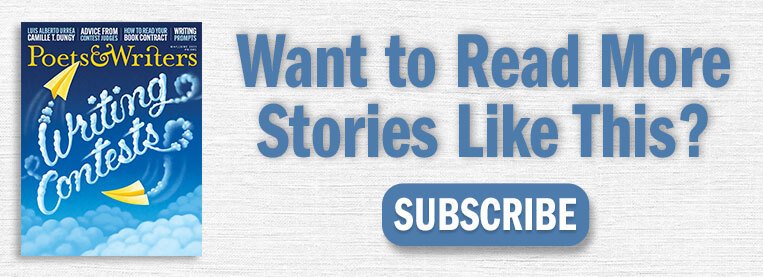In our Craft Capsule series, authors reveal the personal and particular ways they approach the art of writing. This is no. 231.

The most common question at readings is, What is your process? We may seek a reliable roadmap for writing a novel, but advice is a poor substitute for sitting in the chair and getting to work. We must each find our way.
I began writing fiction with the goal of getting music and dance on the page. This is a logical impossibility—music and dance are ephemeral, and embodied, experienced only in the present tense, while the written word can be enshrined and revisited. Within this impossibility, I share some thoughts on my creative process.
I find it too hard to start at the beginning. Endings are even more difficult. I start with a kernel, either a character or an event, or a piece of music, and work forward and backward from there. Over successive drafts, characters come and go, the order of the story changes, timelines flip, and characters and scenes that once appeared tangential move center stage.
My first novel, Three Muses (Regal House Publishing, 2022), concerns a Holocaust victim, John Curtin, who survives in a concentration camp by singing for the Kommandant who murdered his family. Music is destroyed for John. He makes his way to New York, becomes a psychiatrist, and falls in love with a ballerina, Katya Symanova, who cannot work without music.
It took more than seven years for the characters to crystalize and for me to understand the plot of Three Muses. But one thing was clear from the outset: The vocabulary for dance would infuse the descriptions of Katya’s character, and musical jargon would infuse John’s—not to hit readers over the head, but to make these characters specific to this story. Katya leaps on stage and senses John in the audience: “As the music intensified, she skimmed the energy from the audience to breach another dimension. Transcending reason, she danced through raw emotion and spun toward a new center.” When John first sees Katya on stage, he experiences her as a “song being born.”
My new novel, Duet for One, published by Regal House Publishing this month, is a musical love story, as well as a story of the grief surrounding the loss of a mother and wife. Like my process with Three Muses, it took years to figure out who the main characters were, what their story was, and how to order the telling.
But the music that shapes these characters’ lives has been there since the beginning. It is the story’s oxygen.
I started with a scene: What does it feel like to sit in an orchestra’s viola section when you first play Sibelius’s Finlandia? I wanted readers to feel their right ear getting blasted with trombone and French horn sound, and to understand they must follow the conductor because you can’t hear the first violins with whom you’re supposed to harmonize if you’re seated in the brass section’s neighborhood.
In short, I aimed to throw readers into the orchestra and let the story work itself out from there.
Martha Anne Toll is a novelist and literary and cultural critic. Her debut novel, Three Muses, won the Petrichor Prize for Finely Crafted Fiction and was shortlisted for the Gotham Book Prize. Toll is a recipient of multiple artists’ fellowships and residencies. She serves on the Board of Directors of the PEN/Faulkner Foundation. A graduate of Yale, Toll holds a B.A. in Music, and her classical music training informs her artistic practice. She holds a J.D. from Boston University School of Law and comes to writing professionally after a career dedicated to social justice.
image credit: Beth Macdonald






